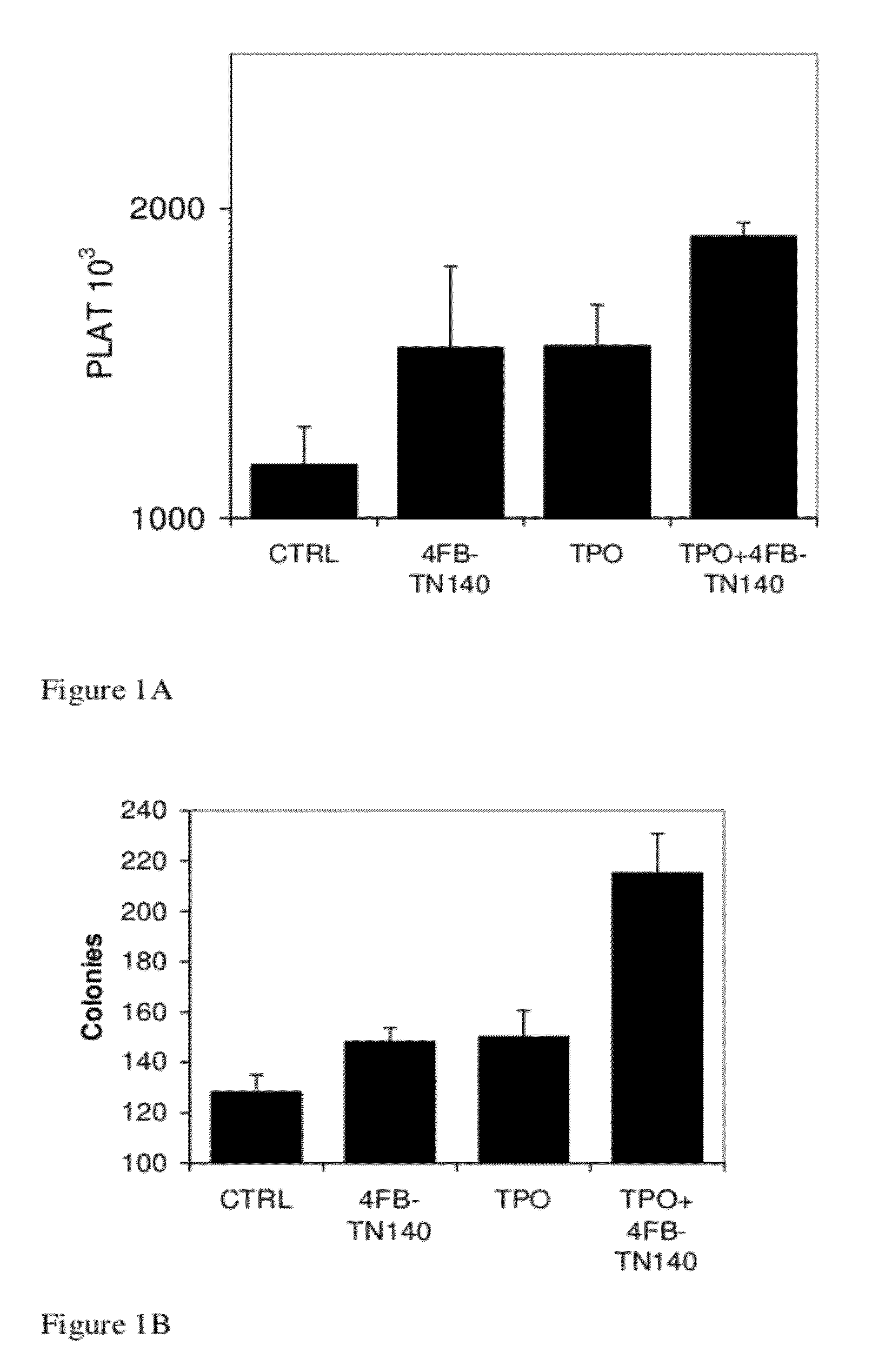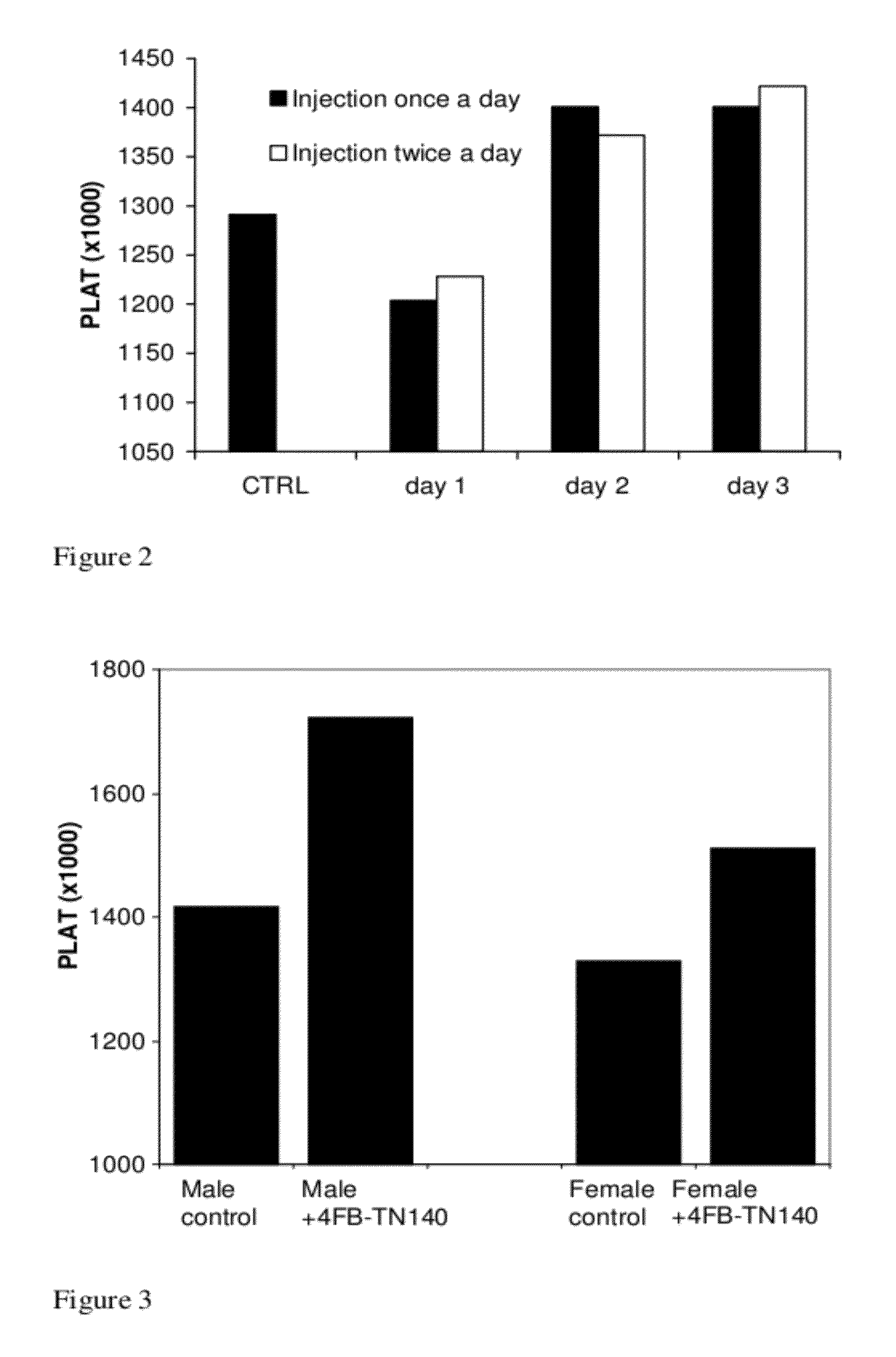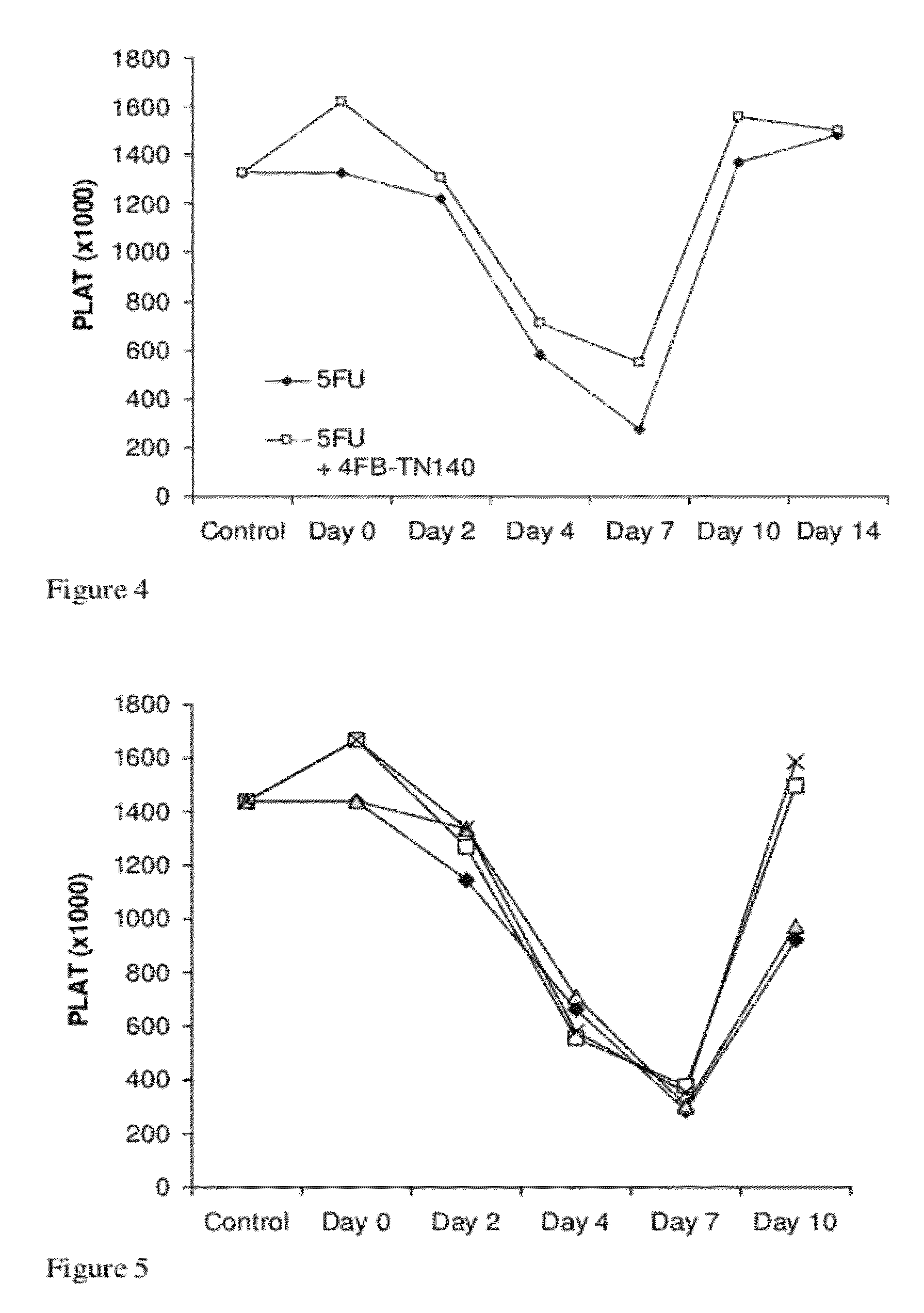Peptide therapy for increasing platelet levels
a technology of peptides and platelets, applied in the field of modulating blood platelet levels, can solve the problems of incomplete understanding of complex maturation, differentiation and localization processes that begin with pluripotent stem cells and end with blood platelets, lose their effectiveness, and increase the risk of platelet transfusion, so as to stimulate the production of platelets, enhance platelet levels, and increase blood platelet counts
- Summary
- Abstract
- Description
- Claims
- Application Information
AI Technical Summary
Benefits of technology
Problems solved by technology
Method used
Image
Examples
example 1
Production of Colonies and Platelets
[0219]As can be seen in FIG. 1 and Tables 2 and 3,4F-benzoyl-TN14003 and Thrombopoietin induce platelets production in the blood (FIG. 1A, Table 2) and colony forming cells (hematopoietic precursor cells, “HPC”) in the bone marrow (FIG. 1B, Table 3). It was also found that these agents cooperate together to further stimulate platelet numbers in the blood and production of progenitors in the bone marrow. Thus, 4F-benzoyl-TN14003 potentiates the activity of TPO in enhancing platelets levels in vivo.
[0220]In FIG. 1, “CTRL” indicates phosphate-buffered saline (PBS)-treated mice, “PLAT” indicates blood platelet levels, “Colonies” indicates the number of colony forming cells (hematopoietic precursor cells) in the bone marrow and “TPO” indicates thrombopoietin-treated mice.
[0221]
TABLE 2Effect of 4F-benzoyl-TN14003 and TPO on platelet countsP value% increaseSDPlatelets (×103)Treatment1231172Control0.005093226315514F-benzoyl-TN140030.000589321331556TPO0.00...
example 2
Prevention of Chemotherapy-Induced Thrombocytopenia
[0225]The platelet modulating effects were then examined in a chemotherapy-induced thrombocytopenia model in mice. In these experiments, 5-fluorouracil (“5FU”) at 150 mg / kg dissolved in saline was injected intraperitoneally to all mice (on day 0). Some of the mice were further treated with 4F-benzoyl-TN14003 (5 mg / Kg, once daily S.C. injections) for 5 days before treatment with 5FU, and Mice were further treated daily with 4F-benzoyl-TN14003 (5 mg / Kg) one day after 5FU and the treatment was continued until the end of the experiment. Blood samples were collected 1 hr following administration of 4F-benzoyl-TN14003 or control (PBS) injection. As can be seen in FIG. 4, administration of 4F-benzoyl-TN14003 enhanced the levels of platelets in blood before and after treatment with 5FU. In FIG. 4, diamonds represent control (PBS treated) mice; open squares represent 4F-benzoyl-TN14003 treated mice.
[0226]Next, the effect of the peptide on mi...
example 3
Acute Elevation of Platelets in Thrombocytopenic Patients
[0228]MM patients undergoing chemotherapy with Cyclophosphamide, received G-CSF according to a clinical protocol for inducing HPC mobilization for subsequent harvesting and transplantation. 10 days after Cyclophosphamide and G-CSF treatment, the patients received 4F-benzoyl-TN14003 injected at a dose of 0.9 mg / kg. As can be seen in FIG. 7, 4F-benzoyl-TN14003 stimulated an immediate increase in the number of platelets in the blood, which could be detected 30 minutes after administration and was still observed several hours later (after 1, 2, 4 or 8 hours). In FIG. 7, the “0 min” time point represents blood platelet levels at the time of injection of 4F-benzoyl-TN14003.
PUM
| Property | Measurement | Unit |
|---|---|---|
| temperature | aaaaa | aaaaa |
| temperature | aaaaa | aaaaa |
| total volume | aaaaa | aaaaa |
Abstract
Description
Claims
Application Information
 Login to View More
Login to View More - R&D
- Intellectual Property
- Life Sciences
- Materials
- Tech Scout
- Unparalleled Data Quality
- Higher Quality Content
- 60% Fewer Hallucinations
Browse by: Latest US Patents, China's latest patents, Technical Efficacy Thesaurus, Application Domain, Technology Topic, Popular Technical Reports.
© 2025 PatSnap. All rights reserved.Legal|Privacy policy|Modern Slavery Act Transparency Statement|Sitemap|About US| Contact US: help@patsnap.com



